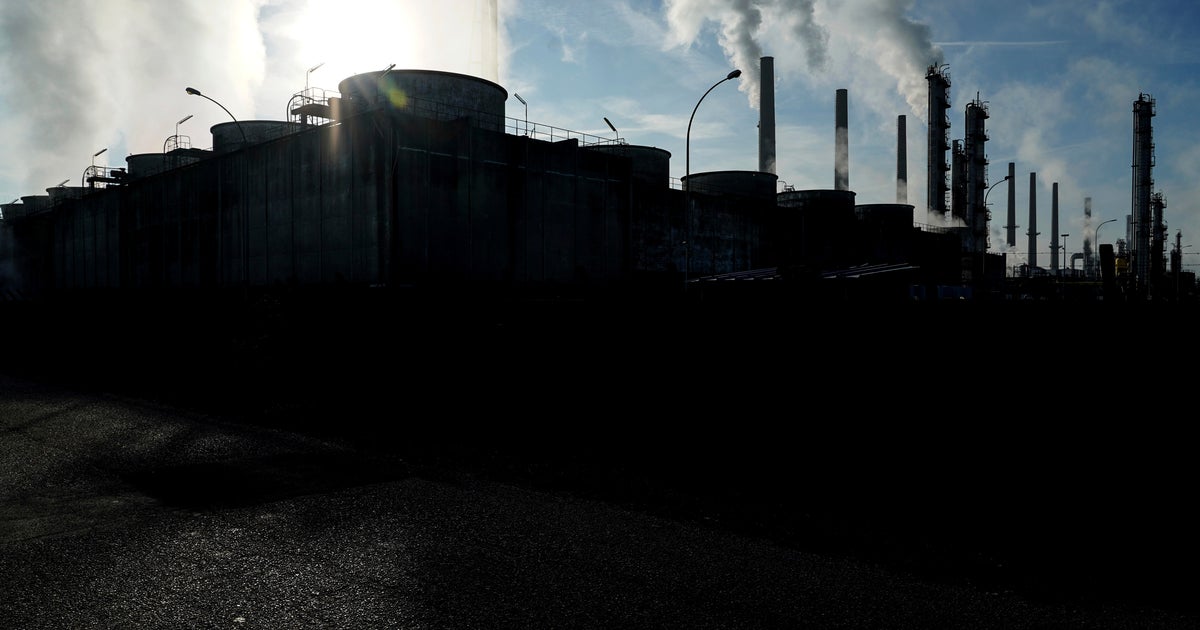Hurricane Maria's impact was like "experiencing the end of the world" and Fiona has unleashed "hell." It's only expected to get worse.
Armando Perez and his 81-year-old mother survived Hurricane Maria when it hit Puerto Rico in 2017. Five years later, they just witnessed Hurricane Fiona, a categorically less intense storm, but one that disrupted their lives nonetheless.
Perez's mother, Carmen, has advanced Parkinson's disease and dementia and has been bedridden since June. The two live together in the town of Dorado. Perez bathes and feeds his mother and changes her diapers.
But since Fiona hit the island five days ago, they've been without power or clean public water. Triple-digit temperatures are baking their home's concrete walls, turning Carmen's room into "a furnace" in the afternoon.
"Even though the storm was not as bad, when the power goes out, no water, it just makes it super hard," Perez told CBS News on Friday.
It's an eerily similar feeling to what life was like post-Maria, Perez said.
"It is hell now. Maria was the closest thing to experiencing the end of the world," he said. "It looked like a nuclear bomb went through there ... I've never seen anything like that in my life."
Climate change and Puerto Rico's struggle to keep up with recovery efforts have experts, and residents, concerned about future storms.
Hurricanes are becoming more frequent
When Hurricane Maria slammed into Puerto Rico as a Category 4 storm in 2017, it knocked out power to the entire island, killed nearly 3,000 people and was named one of the deadliest natural disasters in U.S. history. Almost exactly five years later, Fiona has left the island in shambles once again.
Experts say hurricanes and storms are getting more intense and more frequent because of the warming planet.
David Keellings, professor of geography at the University of Florida, studied the aftermath of Hurricane Maria. He found the hurricane was, "if not the most extreme, certainly very extreme" in terms of rainfall, which he said was "significantly higher than anything that's happened since 1956."
When his research was published in 2019, he found that a Maria-like storm was about "five times more likely" because of climate change. In 2022, that likelihood could be even higher, Keellings said.
The planet's temperature has increased by 0.14 degrees Fahrenheit every decade since 1880, according to the National Oceanic and Atmospheric Administration. Keellings explained that as temperatures increase, so does the atmosphere's ability to hold moisture. That moisture is essentially a fuel tank, ready to be used by storms when they develop.
"Puerto Rico gets hit by a lot of storms, but it just appears if we look at the data, that things like Maria, things like Fiona, are becoming more and more likely to happen," Keellings said.
"You're going to get more and more frequency of these kinds of storms."
Carlos Ramos-Scharrón, a professor at the University of Texas at Austin, who is originally from Puerto Rico, said major storms can be expected "every decade." His research also found an increased probability of storms with Maria's record-breaking rainfall.
"You're going to have more of the really high, extreme cyclones, like a cat 4, 5 plus, and then they have the potential to become more extreme than they have in the past," he told CBS News. "You're going to be exposed to the most extreme events."
Even weak storms can have devastating impacts
Both researchers warned that hurricanes don't have to be more than a Category 1 storm to cause damage. Why? Because, as Keellings explained, it takes "years" to return to normal after a major storm.
Maria and Fiona are the perfect examples. Puerto Rico had a slow recovery process in the five years between the two storms. It was hampered by a recession, the ousting of its governor and the coronavirus pandemic.
After Maria, the island devoted $20 billion to modernize its power grid, and has worked to improve its infrastructure, rebuild homes and try to stabilize. But it remained a work in progress when Fiona hit. The power grid went out again this week, and the island's agriculture industry and infrastructure, though somewhat improved since Maria, have now been set back once more.
For example, the island's flood maps, used for city and strategic planning, are still based on data from before the 1990s, Ramos-Scharrón said.
In Utuado this week, a metal bridge that was installed a year after Maria was swept away by floodwaters. The bridge was meant to be temporary until a more permanent structure could be built in 2024, CBS News' David Begnaud reported.
Ramos-Scharrón told CBS News that the bridge, like much of the rest of the island's infrastructure, was a kind of band-aid solution to a bigger problem.
"Provisional stuff tends to stay forever in Puerto Rico," Ramos-Scharrón said, adding that short-term fixes need better standards, and those fixes need to subsequently be replaced sooner.
Also when Fiona hit, more than 3,000 homes on the island were still covered with blue tarps from Maria.
"It's not just weather-related, per se, it's all the other things creating disturbances to the system that never balanced back," Ramos-Scharrón said.
These problems impact everyone on the island — but the elderly, like Perez's mother, feel it the most.
Perez has yet to hear when power will be restored, and he only has enough bottled water to last a few more days.
If Puerto Rico gets hit by another hurricane, regardless of its size, he's not sure how he and his mom will fare.
"We're going to get hit with a massive storm," Pere said. "And if we're not able to manage a Fiona as a Category 1, how are we going to handle a 5? This is not catastrophic. This is sad and messed up. What's going to happen is super catastrophic, because they don't learn from their lessons."
Perez said he is now "just surviving day-to-day" – and hoping that there's time to recover before the next major storm hits.



